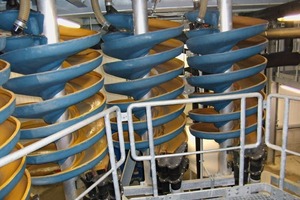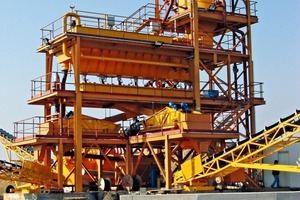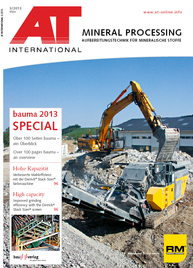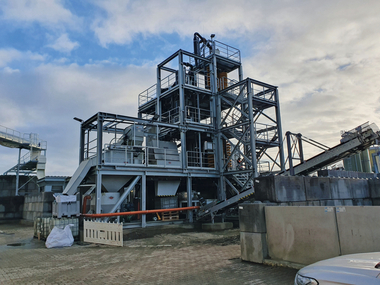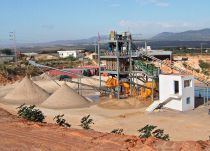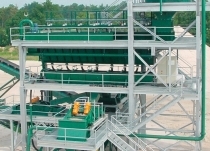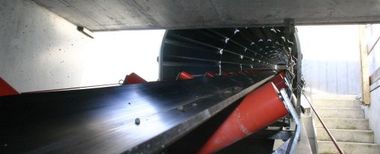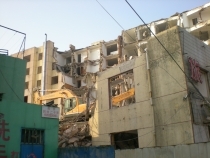AKW Apparate + Verfahren GmbH
For 50 years AKW Apparate + Verfahren GmbH has successfully built not only processing plants for ores, minerals, industrial sands, but also soil cleaning and track ballast plants as well as plants for recovery of valuable material and process water treatment and preparation. Raw material deposits running short in combination with poor quality and more sophisticated requirements for product quality do not have to be an impossible contradiction. In recent years, the quality requirements of the building materials industry have been increased, e.g. solutions for the separation of organic and other interfering components. Both AKA-Sizer TAS fluidized bed sorters and AKA-SPIN spirals are ideal to separate heavy minerals or organic substances (wood, coal, …).
The upward current separator AKA-Sizer TAS separates precisely organic particles via a defined amount of upward current water and a density-controlled fluidized bed. In addition, heavy particles can be separated using AKA-SPIN spirals. The organic separation stage by means of both the AKA-Sizer TAS separator and AKA-SPIN (Fig. 1) spirals can be integrated into existing processing plants due to a compact design. The basis for optimum process design including guaranteed quality features is developed in the technical laboratory of AKW.
Another unit of wet classification technology is the AKOREL free-fall classifier (Fig. 2) that produces high-quality building sands in the range of 0-2 (4) mm in accordance to a defined grading curve with high throughputs (range: 80-500 t/h) very economically. Only a minimum of excess particles is separated as “uncontrolled product”. A most advanced control technology, together with a rugged and wear-resistant design, permits a flexible, resource-saving and economic construction sand processing. From the process engineering point of view, different sand fractions are classified by trend from coarse (feed range) to fine (overflow) and are blended to become defined product carefully controlled according to preset recipes. As a result of a multitude of “programme set screws”, a flexible manual or automatic response is possible to varying input qualities in the deposit and changing requirements of the customers. This is supported by visual display of the grain size curve and the output. High-quality and sharply classified sands can also be produced by the upward current separators AKA-SIZER TAK and RAK.
In order to achieve high surface quality and bright colourations, e.g. in the exposed concrete, foundry, glass and industrial sand, the plant can be extended by AKA-TRIT. In this case, the particle surface is intensively cleaned by means of particle-particle mechanical stress (attrition).
Our range of products is completed by AKA-VORTEX hydrocyclones (classifying, desliming, dewatering) and AKA-SET high-capacity thickeners for process water treatment. A+V sales engineers are looking forward to preparing individual and practical solutions starting from problem definition via planning and implementation up to after-sales service.
Hall B2; Stand 412B

